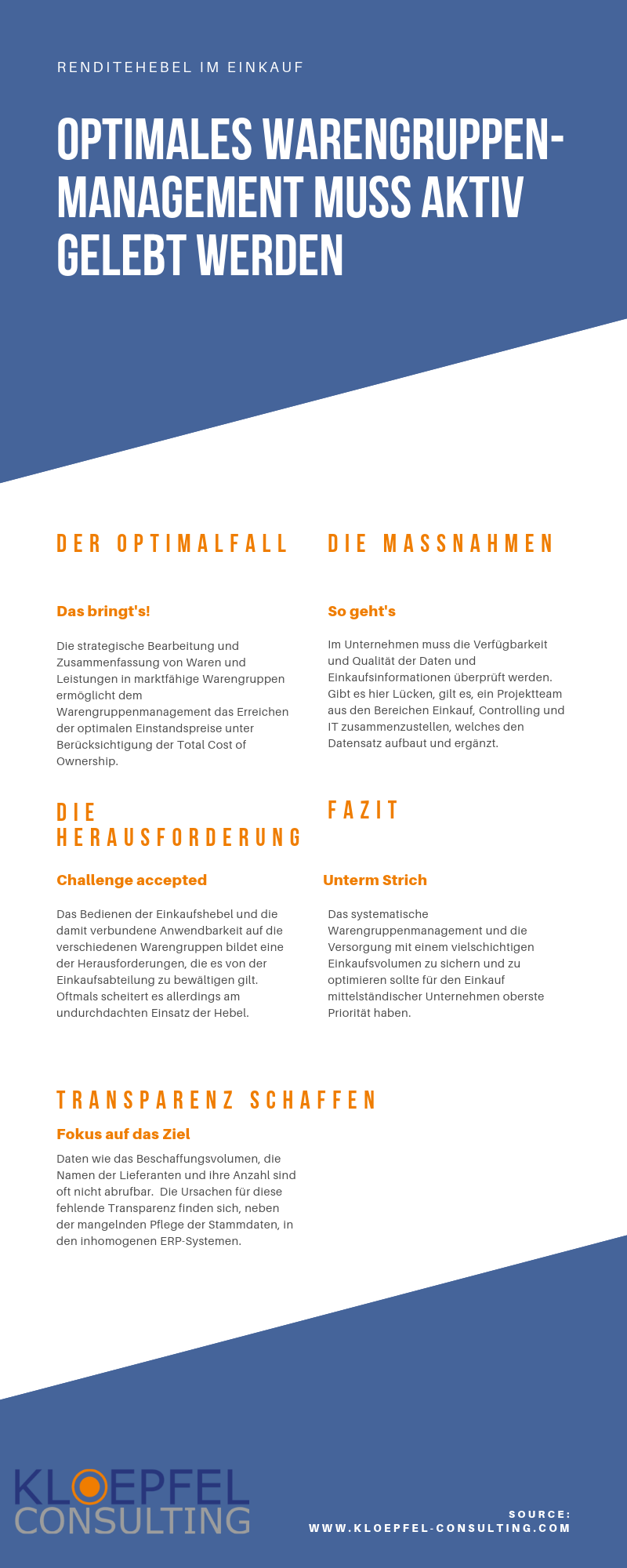Optimum product group management needs to be lived actively
Successful product group management requires a restructuring of the company: away from the subdivision into purchasing and sales; towards a management of the company according to product groups as strategic business units.
The strategic processing and pooling of goods and services into marketable product groups enables product group management to achieve optimum cost prices while taking into account the total cost of ownership. Product group management is a prerequisite for being able to operate improvement levers and thus assumes a central position for achieving savings.
Challenges
Many companies have already calculated their purchasing according to the category management approach or are in the implementation phase. However, they have to face various challenges. The operation of the purchasing levers and the associated applicability to the various product groups is one of the challenges that the purchasing department has to face. However, it often fails due to the poorly thought-out use of levers.
In just a few companies, data such as the procurement volume, the names of suppliers and their number can be retrieved according to product groups. The reasons for this lack of transparency can be found in the inhomogeneous ERP systems, in addition to the lack of master data maintenance. If the purchasing department wants to receive results sorted according to product groups, the evaluations must be merged manually, which requires an enormous amount of work.
A further challenge is the lack of resources available for planning, controlling and monitoring. The control is often done manually or via EDP programs. The results are usually saved and stored on the local computers and thus complicate a comprehensive structure and planning with an efficient controlling of cost savings.

Measures
The processes must therefore be modelled and implemented so that they are consistent throughout the entire supply chain. This must be achieved by creating transparency concerning purchasing data, using and operating purchasing levers and checking and continuously updating the implementation status of the measures.
The availability and quality of data and purchasing information must be checked within the company. If there are gaps, a project team from the areas of purchasing, controlling and IT has to be formed to set up and supplement the data record. It is particularly important to create the data record in such a way that it can be used permanently and continuously. In order to complete the project successfully, the relevant supplier data such as cost prices and unit numbers of the past years and planned figures for the coming year must be dealt with in particular detail.
The company must also allocate the purchasing levers efficiently by classifying the product groups. A differentiation can be made for example between technical, commercial, process-related or e-business purchasing levers depending on the procurement volume and complexity of the product group. In this way, the effort is compared with the estimated savings potential of a product group.
The decision-makers responsible for the project are in charge of continuously updating the implementation status. It therefore makes sense to integrate a tool for updating the data in the project and to give every employee access to it. In this way, information such as the implementation date or the time of implementation can be stored. The tool acts as a kind of control system for the decision-maker. In this way, action and savings reports can be generated.
Conclusion
The systematic product group management and the supply with a multi-layered purchasing volume to secure and optimize should have the highest priority for the purchase of medium-sized companies. It requires regular adaptation through new strategies, changed purchasing volumes and improved data transparency. In this way, it can be successfully used to optimize the various product groups and to secure potential savings.
Overall, data transparency is probably the most important aspect for the success of the project. Only if the quality and availability of the data is assured and a permanently usable instrument for the maintenance of the data has been created the next step can be taken.


